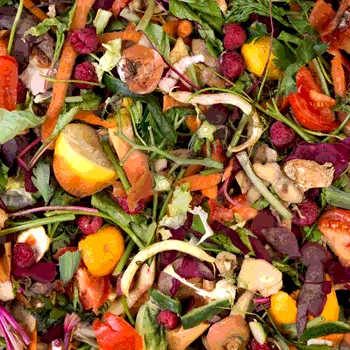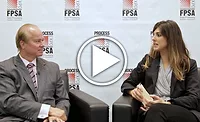What the Food Industry Can Do to Tackle Food Waste

At KeHE, we serve to make lives better. We’re passionate about good food produced in sustainable ways delivered to a hungry world. We approach the market with integrity and a clear purpose to do good. Where KeHE goes, goodness follows. It’s why we partnered with Climate Collaborative, an organization that is working towards a sustainable future with its first step in food waste reduction.
“If food waste were its own country, it would be the world’s third-largest greenhouse gas emitter. The problem is the worst in the U.S., where nearly half—a full 40 percent—of our food goes uneaten,” Climate Collaborative shared in a recent release. “And it’s not just food that’s being wasted–roughly one-fifth of all U.S. cropland, fertilizers, and agricultural water is used to grow this food that’s ending up in the landfill.”
To tackle this challenge, KeHE and Climate Collaborative partnered to launch the Retailer Food Waste project, along with food waste expert Dana Gunders. The project involved retailer visits across the U.S. to conduct in-depth food waste consultations. From those findings came a 10-step Food Waste Reduction Toolkit for retailers to takeaway useful implementation strategies in their store. Laura McCord, executive director of Sustainability & Corporate Responsibility at KeHE, led the charge with Climate Collaborative and states, “we felt that our participation and financial support would provide actionable resources that would not only benefit our retailers, but also our suppliers and employees.” The toolkit specifically gives robust strategies on how to build an in-store culture promoting food waste reduction, how retailers are helping customers reduce more waste at home, and best practices on enlisting staff members.
McCord also notes, “although this toolkit was created for the purpose of mitigating loss at a retailer level, it goes far beyond that. All the case studies depict specific examples that each step of the food supply chain can implement—not only retailers but also consumers, distributors, and suppliers.”
Two impactful examples listed in the toolkit center around inventory best practices and reducing spoilage. A representative from Canyon Market in San Francisco, CA, said “you need to be a fanatic about inventory. The second it comes to your door, you’re losing money.” Although over-ordering can be financially draining for a retailer, it also goes hand-in-hand with spoilage. Having too many SKUs for similar perishable items can overwhelm consumers and cause more products to spoil. A second case study shows how to slow down the rate of fast spoiling items by providing merchandising techniques using refrigerators and tarps. Alameda Natural Grocery and Valley Natural Foods stores, also in California, both use refrigerators for high spoiling items, like berries, to slow the deteriorating process.
Exposing products to warm temperatures is the fastest route to spoilage and foodborne illness. By preventing products from spoiling, retailers not only decrease the loss of sales but also provides consumers with safe-to-eat products. Incorporating temperature alert systems, maintenance of refrigeration systems, and efficient loading and unloading of products are a handful of ways to save food from developing illness causing bacteria and prevent waste.
KeHE encourages all members of the food supply chain to take advantage of Climate Collaborative’s free resources to act against food waste. To read more about the 10-step Food Waste Reduction Toolkit and access a self-assessment checklist tool, click here.
KeHE is a Chicago-based food distributor.
Looking for quick answers on food safety topics?
Try Ask FSM, our new smart AI search tool.
Ask FSM →







